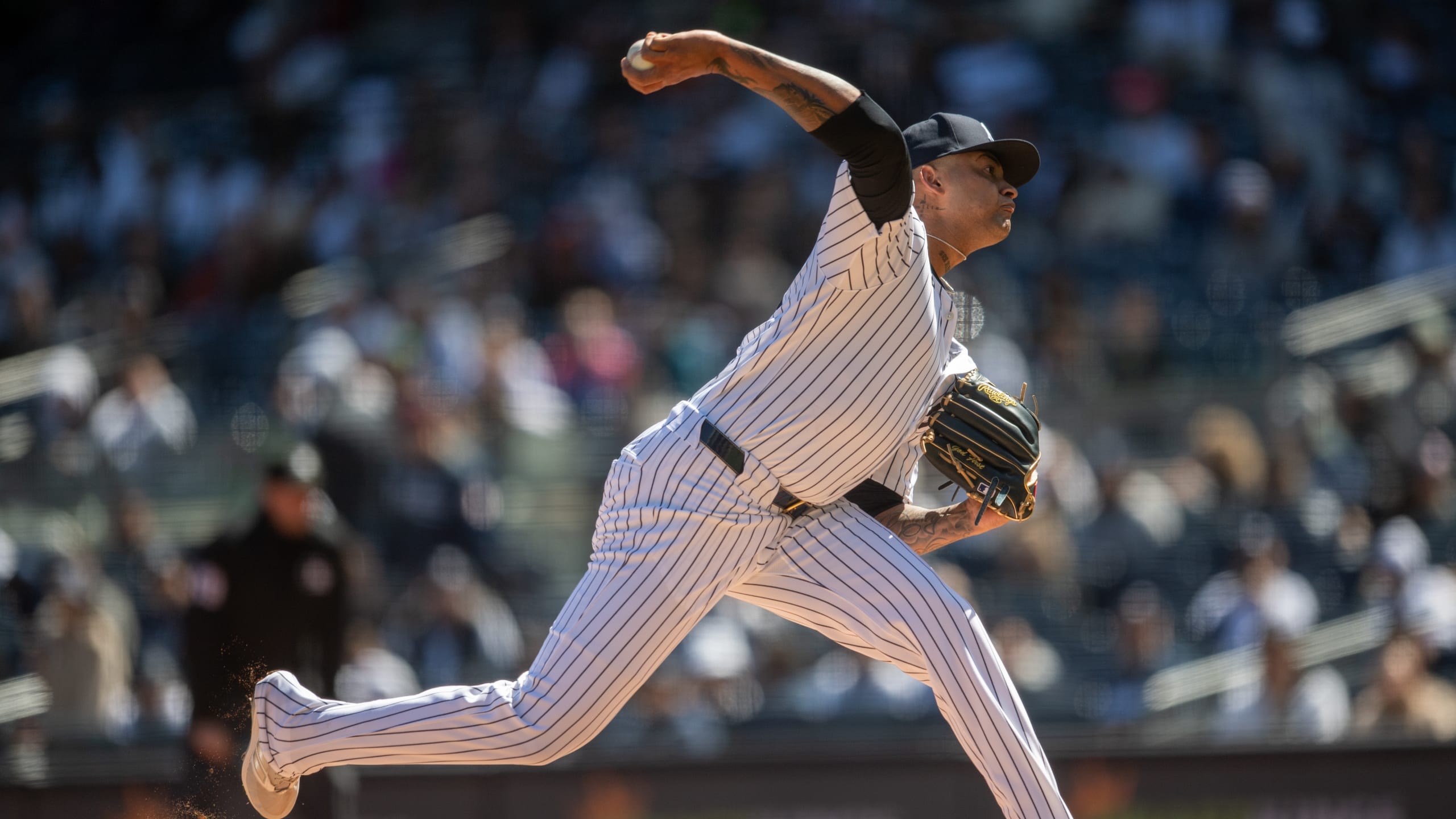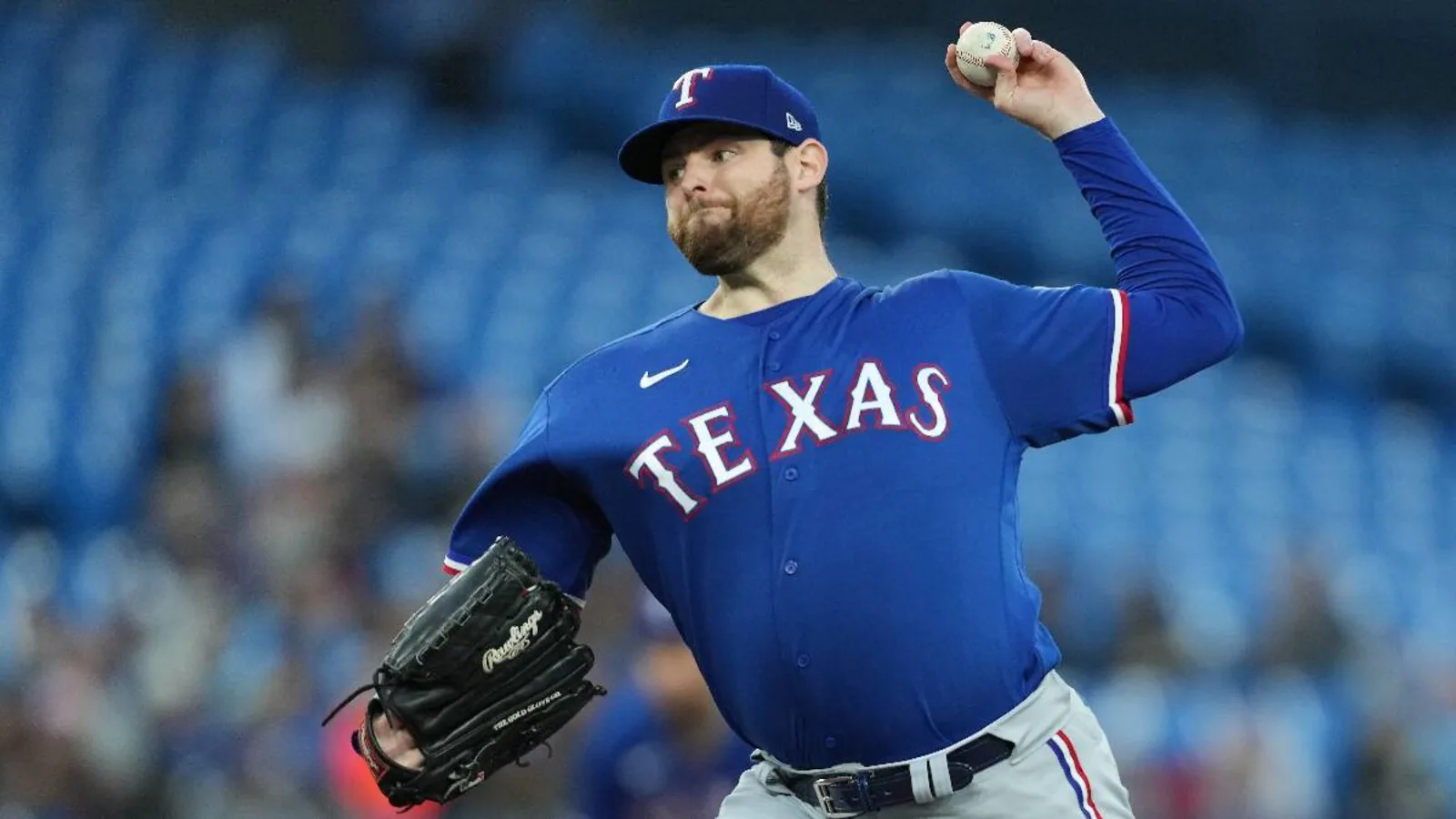
Millions of hearts collectively skipped a beat among the Yankee faithful when news filtered down that Gerrit Cole would miss the first 10-12 weeks with nerve inflammation and edema in his pitching elbow. What chance did the rotation stand without its ace and reigning AL Cy Young winner for the opening months of the regular season, particularly given all the question marks behind him? Collective worries deepened when we learned the team would fill Cole’s absence by promoting from within, holding a fifth starter competition in spring training rather than pursue external reinforcements via free agency (Blake Snell, Jordan Montgomery, etc.) or trade (Corbin Burnes, Dylan Cease, etc.)

Fast forward to Game 13 and those fears could not have been put to bed more quickly. Even in Cole’s absence, the Yankees own the best record in baseball (10-3) thanks in large part to the third-lowest ERA (2.52) of any starting rotation around the sport. Carlos Rodón and Nestor Cortes have rebounded from their injury- and ineffectiveness-plagued 2023 campaigns, Marcus Stroman has yet to give up an earned run in his first three starts, and Clarke Schmidt is throwing harder and with better command. However, perhaps the most exciting development to come out of the starting staff has been Luis Gil’s blistering start to the season.
When Gil won the fifth starter job out of spring, a substantial portion of the fanbase was excited remembering his impressive 2021 debut, but I’m not sure many of us could have envisioned just how electric he would look out of the gate. Pitching off a major league mound for the first time in 691 days, Gil held the Diamondbacks to a run on one hit and three walks with six strikeouts across 4.1 innings in his season debut before striking out eight Blue Jays in his next start — two runs in 4.1 innings — including the side in the third and fourth.
Gil’s early success is down to his fastball, which Aaron Boone recently compared to Gerrit Cole’s. He gave us glimpses of its potential in his 2021 debut season, but initial results suggest it is operating on another level this season. He’s throwing the four-seamer about one mph faster than he did in 2021 and 2022 and wth with a spin rate almost 70 rpm higher than his debut season, giving it better life in the zone. He’s not afraid to throw it any count and for good reason — the pitch has an astonishing 31.8-percent whiff rate, 20th-best among pitchers who have thrown at least 100 four-seamers so far.
What’s impressed me most about the pitch is its movement profile. The elevated spin rate — at 2,512 rpm, it’s the 14th-highest spin rate of any four-seamer in MLB — gives it that much-desired riding action, that illusion of rise making it almost untouchable at the top of the zone. The pitch is exhibiting a half-inch more rise than in 2021. That may not seem like a lot, but that half an inch is the difference between a whiff and a foul to the screen or a pop up and a fly ball.
This movement places the pitch comfortably in the top-quartile league-wide in four-seamer rise, which combined with its velocity makes it one of the best fastballs in terms of entry into the zone. So far, the pitch is showing roughly a ten percent improvement from his first two seasons in terms of vertical attack angle relative to the league. In simple English, this means the ball is entering the zone even flatter than before, keeping it above the barrel of the bat.
Let’s take a look at a couple of examples to see this data in action. We’ll start with this 100 mph heater to blow away Christian Walker. This is the power of velocity — the ball is in the catcher’s mitt by the time Walker’s bat enters the hitting zone.
The next inning, Gil gassed this 98 mph cheese right by Eugenio Suárez. The flat trajectory of the pitch causes the third baseman to whiff underneath whereas four-seamers with less ride might’ve dipped into the zone and onto his bat.
Whiffs are the ideal outcome, but even when Gil doesn’t induce the swing and miss, the fastball is still capable of avoiding damage. This pitch to George Springer is right down the middle at a hittable 95 mph, but again the riding action keeps the ball above the barrel and results in a harmless foul ball.
Finally, we end with this 98 mph heater to Lourdes Gurriel Jr. The pitch is elevated but center-cut and still well within the strike zone, perhaps a bit dangerous for a 1-2 offering. However, I think it’s telling that the catcher calls the fastball and sets up middle-middle — they are almost daring the hitter to try and get the barrel to the fastball and so far none have succeeded, this particular sequence ending with a pop up in the infield.
I try not to get too excited about early season results. It would be tempting to point at Gil’s placement in the 90th percentile or higher in strikeout rate, hard-hit rate, and xwOBA and yell “ACE,” but many of those numbersencourages me will take a while to stabilize. However, raw metrics like velocity, spin rate, and movement stabilize much quicker, and it’s the overall process that gives me encouragement. Sure, the slider and changeup are works in progress in the command department, but if Gil is able to keep throwing his fastball with conviction in the zone, I feel confident that positive results will continue to stack.



Be the first to comment